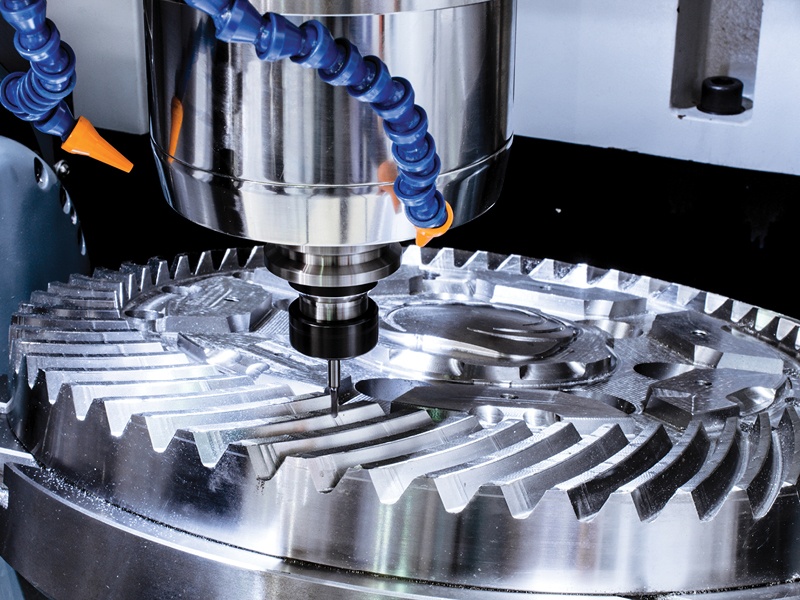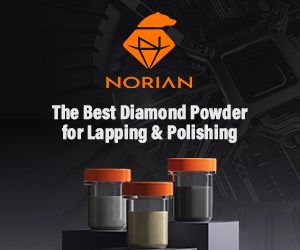CUTTING TOOLS

Drills, taps, end mills, grooving tools, form tools and turning tools continue to be redesigned with new geometries and coatings to maximize material removal rates and surface finish of machined parts.
Narrow by Cutting Tools Product Category
- Abrasive Compounds & Slurries
- Arbors (for Cutters)
- Boring Tools
- Boring Tools & Heads for Machining Centers
- Boring Tools for Turning Machines
- Broaching Tools
- Buffing & Polishing Supplies
- Burnishing Tools (Roller)
- Burnishing, Honing & Lapping Tools
- Chamfering Tools
- Cold Heading Tools
- Collets for Toolholding
- Collets, Solid & Master
- Counterbores/Countersinks
- Cut-Off Tools/Attachments
- Deburring Tools (Machine Tool Spindle-Mounted)
- Diamond Tools
- Die & Mold Components
- Drill Bushings
- Drill Chucks
- Drilling Heads/Attachments
- Drills
- End Mills
- Endworking Tools
- Facing Tools/Heads
- Form Tools
- Gear Cutting Tools
- Gear Rolling Tools
- Grinding Wheel Dressing Units
- Grinding Wheels & Belts
- Grooving Tools
- Gundrills
- Honing & Lapping Tools
- Inserts, Indexable (Carbide, etc.) & Tool Inserts
- Key Seating Tools
- Knurling Tools
- Marking Tools
- Mass Finishing Media & Compounds
- Milling Cutters
- Milling Heads/Attachments
- Protective Sleeves & Coatings (for Cutting Tools)
- Punching Tools/Dies
- Reamers
- Retention Knobs
- Saw Blades
- Serration Tooling
- Shaving Tools
- Shear Blades
- Slotting Saws
- Spline Inserts
- Spline Rolling Tools
- Tap Drivers & Attachments
- Taps
- Thread Chasers
- Thread Milling Cutters
- Thread Rolls & Dies
- Thread Whirling Tools
- Threading Tools
- Threading Tools - Cutting
- Threading Tools - Forming
- Tool Blanks
- Tool Condition Monitoring Systems
- Tool Conditioning Equipment
- Tool Presetters
- Tool Repair, Coating & Treatment Services
- Tool Storage & Handling Systems
- Toolholders
- Tooling Materials, Carbides
- Tooling Materials, Ceramics
- Tooling Systems, Modular and/or Quick-Change
FAQ: Cutting Tools
How do I determine the best insert grade for a given application?
The best place to start the selection process is with the workpiece material because the type of material being machined plays a key role in determining whether or not a coated or uncoated carbide insert is needed.
Coated carbide inserts are a must for working with ferrous materials such as iron, cast iron, steel or stainless steel. When machining super alloys, it’s best to use a coated insert most of the time, especially when cutting alloys with medium to high machinability ratings. Titanium alloys also benefit with coatings, especially when not using high-pressure coolant.
Uncoated carbide inserts are ideal for applications involving non-ferrous materials, such as aluminum. In fact, because aluminum can be soft and lead to built-up edge, it’s best to make use of an extremely sharp, uncoated cutting edge. Other materials not requiring a coated insert include brasses, bronzes, many composite materials and wood. That said, however, productivity and tool life can be dramatically improved with the use of an appropriate diamond coating.
The insert selection process becomes tricky when trying to pick the right coating type. After all, every application is different, and both the coating processes and coating materials must be taken into consideration. And, while there is no simple answer to “How do I choose the right insert coating?” understanding coating processes and coating materials help take some of the ambiguity out of the selection process.
How does chip control impact tool life?
Chip control issues often lead to other problems such as shortened tool life, conveyor stoppages and poor surface finishes, while also creating safety hazards. These concerns cost shops countless hours of production time. But certain strategies can be implemented to help shops recognize potential pitfalls, allowing them to take control of their chips, resulting in longer tool life and better productivity.
While chips may sometimes be viewed in a negative light, they do bring advantages to the cutting operation when properly handled. In almost every metalcutting process, excess heat is generated. The excess heat only has a few paths of escape: the environment, the workpiece, the cutting tool and the chip. For steels using the optimum cutting speed, dry machining will result in about 75 percent of the heat leaving with the chip, 10 percent in the material and 15 percent transmitted to the cutting edge. Heat-resistant alloys will realize less benefit, but even a modest 25 percent leaving with the chips will help with tool life.
(Source: The Fundamentals of Chip Control)
What types of materials can be PVD coated?
Physical vapor deposition (PVD) is a vacuum coating process commonly used to improve the performance of cutting tools. PVD coatings can be applied to most metals that can withstand being heated to 800°F. Commonly coated medical materials include 303, 440C and 17-4 stainless steels; titanium alloys; and some tool steels. PVD coatings are typically not applied to aluminum, because the temperature of the coating process is close to the material’s melting point.
(Source: FAQs about PVD Coatings)
Get Listed!
Thousands of people visit this Supplier Guide every day to source equipment and materials. Get in front of them with a free company profile.





.png;maxWidth=300;quality=90)


